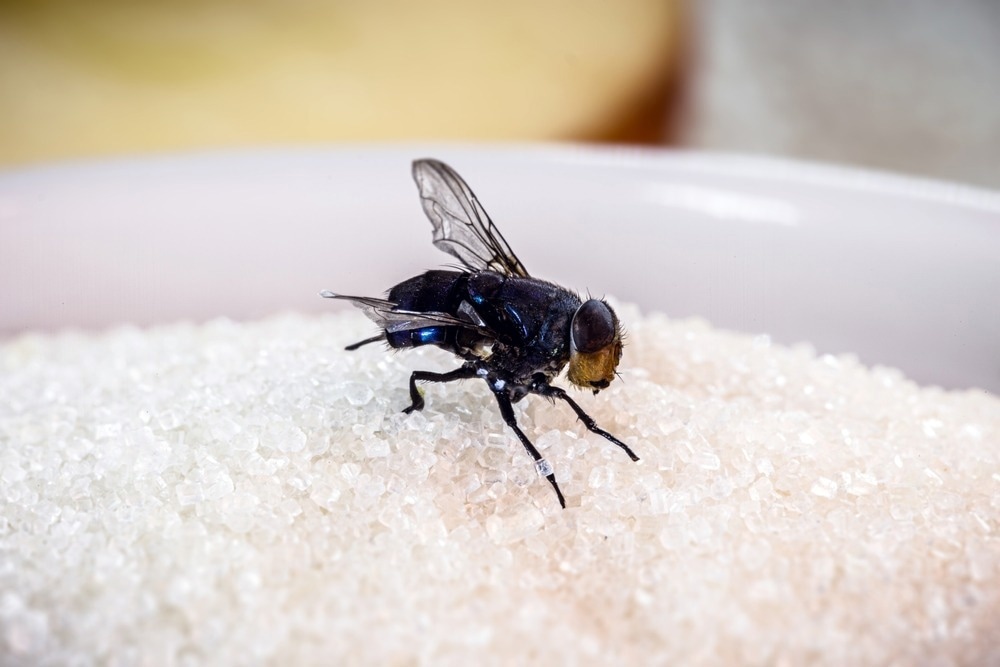Insects have numerous receptors on their tongues, each of which can detect a different kind of sugar, unlike humans who have a single receptor on their tongues that can detect all kinds of sweets, including artificial sweeteners like aspartame.
 Image Credit: RHJPhtotos/Shutterstock.com
Image Credit: RHJPhtotos/Shutterstock.com
To better understand how animals interpret their environment through chemistry and to potentially replicate that ability in the future, Yale researchers have now discovered one mechanism that allows insect receptors to be selective.
The research was published in the journal Nature.
Joel Butterwick, senior author of the study and assistant professor of pharmacology at Yale School of Medicine, stated that sugar is essential for both humans and animals.
We all taste sugar. It is a major source of energy for just about every animal.”
Joel Butterwick, Study Senior Author and Assistant Professor, Department of pharmacology, University of Yale
The sense of taste is also critical for determining which nutrients are required and for producing an enjoyable sensation that is associated with nutrient intake. Insects, as opposed to mammals, also use their taste buds to find potential mates and determine the ideal locations for egg deposits.
Butterwick added, “Uncovering the mechanisms that underlie how receptors recognize various substances will help researchers understand how smell and taste enable humans and animals to decipher the chemical world.”
However, it is still unknown how insects identify particular sugars, i.e., distinguish between molecules that share striking similarities but differ slightly from one another. Butterwick and his research team concentrated on one receptor, D-fructose, which is so selective that it responds to only one kind of sugar, to gain a better understanding of the sensitivity of insect taste receptors.
The silk moth’s mouth and brain contain the receptor. Because it is a ligand-gated receptor, activation occurs only in response to the ligand the molecule that is able to bind to it attaches.
Surprisingly, the researchers discovered that several other sugars bind to this receptor despite the fact that D-fructose is the only sugar that activates it, they reported.
Butterwick stated, “That told us that the area where these sugars attach, the binding pocket, is not the only thing determining activation, and there had to be some other explanation, so we wanted to look at the receptor at atomic scale to see in detail how the sugar and receptor were interacting.”
Both the receptor unbound to D-fructose and the receptor bound to it were mapped by the team. They saw that D-fructose was tucked into the binding pocket, where it caused the receptor to change shape and become active.
Next, they mapped the receptor’s structure while it was attached to a sugar that was strikingly similar to D-fructose. Although L-sorbose did not alter the shape of the receptor, it did not appear to bind to it any more strongly than D-fructose, rendering it inactive.
It transpired that the two sugars differed not in their mode of attachment to the binding pocket but rather in their interactions with a molecular bridge that links the binding pocket to an alternative region of the receptor.
To put it briefly, L-sorbose was unable to engage that bridge and start the shape change, whereas D-fructose did
“What we think is interesting about that is that there are interactions happening outside of the pocket that act as a mechanism of selection, and evolution likely works on both aspects. For example, a less specific receptor than this one maybe binds more molecules or maybe its bridge is easier to activate. With multiple aspects to act upon, there are more ways for evolution to fine-tune these receptors,” Butterwick further added.
Researchers will be better able to comprehend how humans and animals interpret the chemical world if they can identify the mechanisms underlying receptors' recognition of different substances, according to Butterwick.
He added that it might also guide the creation of biosensors. Dogs with certain diseases, like Parkinson's or cancer, can detect scents. The development of “electronic noses” that could detect illness would benefit from an understanding of how taste and smell receptors distinguish different substances.
Butterwick stated, “People are already trying to do this. And while there have been a few successes, there have been more failures, and our work here may help explain why it has been challenging. It is not just about binding the molecule of interest. How the receptor activates is also essential.”
The researchers intend to investigate these receptors' pharmacological potential in the future.
There have been countless cases throughout history where a solved atomic structure paved the way to major discoveries.”
João Victor Gomes, Study Lead Author and Graduate Student, University of Yale
Gomes is from Brazil, which is currently facing a severe dengue surge, with more than one million cases of the mosquito-borne disease registered this year alone.
Gomes concluded, “If we can modulate receptors that affect the feeding behavior of insects, perhaps we could develop better strategies against disease-transmitting mosquitoes.”
Source:
Journal reference:
Gomes, J. V. T., et al, (2024) The molecular basis of sugar detection by an insect taste receptor. Nature. doi:10.1038/s41586-024-07255-w